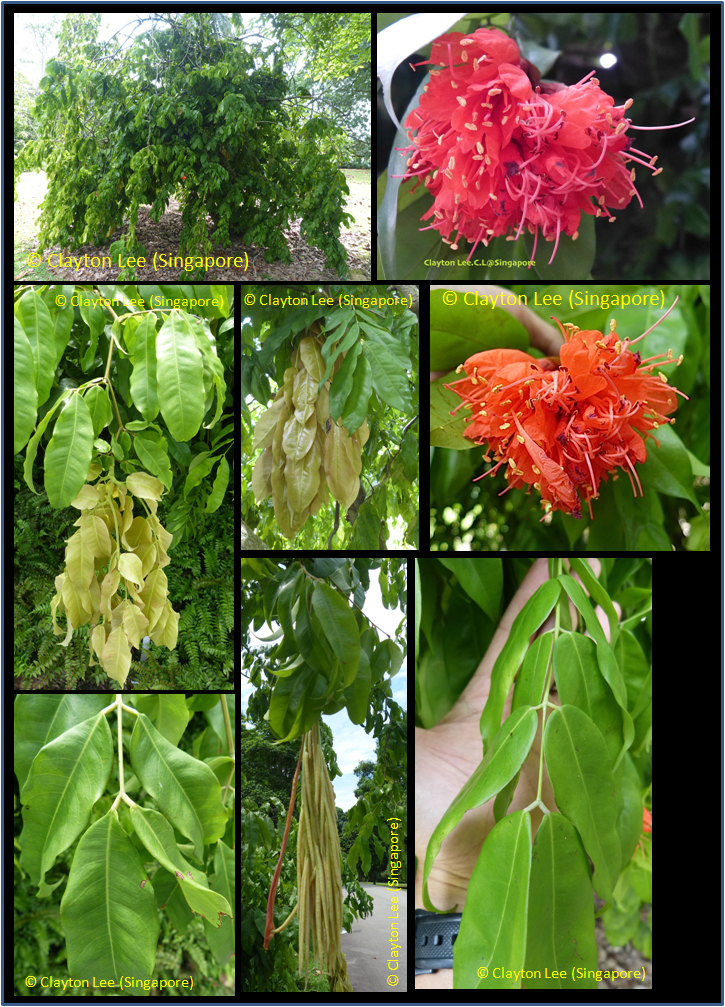Brownea coccinea Jacq., Enum. Syst. Pl. 26 (1760)
Species name meaning 'red coloured', referring to the flowers.Synonyms
Brownea capitella Jacq.
Brownea latifolia Jacq.
Diagnostics
Stipules present, leaf-like, dropped. Leaves alternate, paripinnate (even) compound, leaflets with
gland at the base of midrib beneath. Young leaves in pendent, linear, stipular or bracteate
sheath buds up to 20 cm long. Inflorescences short, compact, nodding, densely red flowered.
Description
Tree up to 6 m high; young branchlets densely shortly hairy. Stipules 0.3-0.6 cm
long. Leaves usually 2-5-jugate, the petiole and rachis 5-16 cm. Leaflets ovate-oblong,
3.5-15.5 by 1.5-5.5 cm, apex acuminate, base obliquely rounded, or slightly cordate,
glabrous on both surfaces. Inflorescences 7-10 cm in diam. during anthesis, the peduncle
and rachis 1-1.5 cm; bracteoles 1.75-2.25 cm long, densely pubescent; pedicels
5-11 mm. Hypanthium 8-11 mm long. Calyx lobes 1.3-2 cm long. Petals 2.25-4.75
cm long, red. Stamens 4-4.5 cm; filaments united at the lower 15-20 mm. Ovary c. 10
mm long, the style 2-4 cm. Pods 8-15.5 by 2.5-4 cm, thinly shortly hairy. [from Flora Malesiana]
In open forests on sandy, well drained soils.
Uses
Grown as an ornamental.
Distribution
Native in Northern South America, but nowadays widely cultivated across the tropics. In Asia commonly
grown in India, Peninsular Malaysia and Java.
Local names
English: Scarlet Flame Bean, Mountain Rose, Rose of Venezuela and Cooper Hoop.
